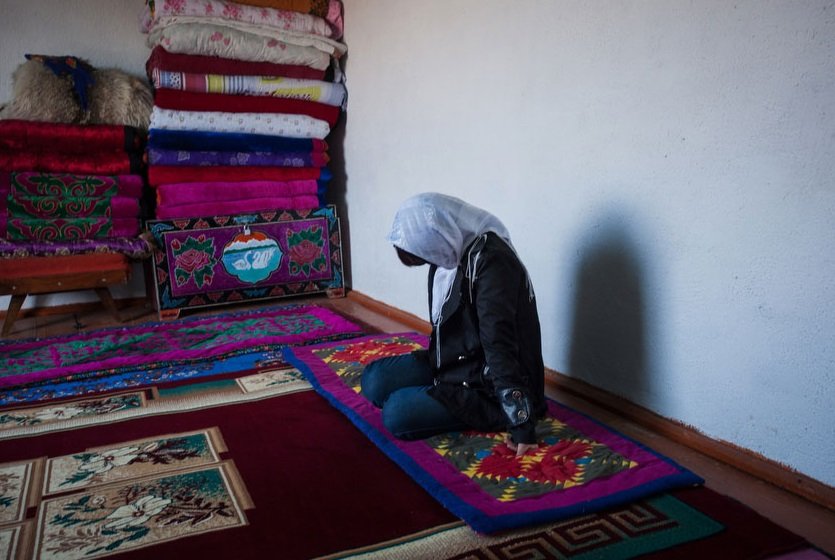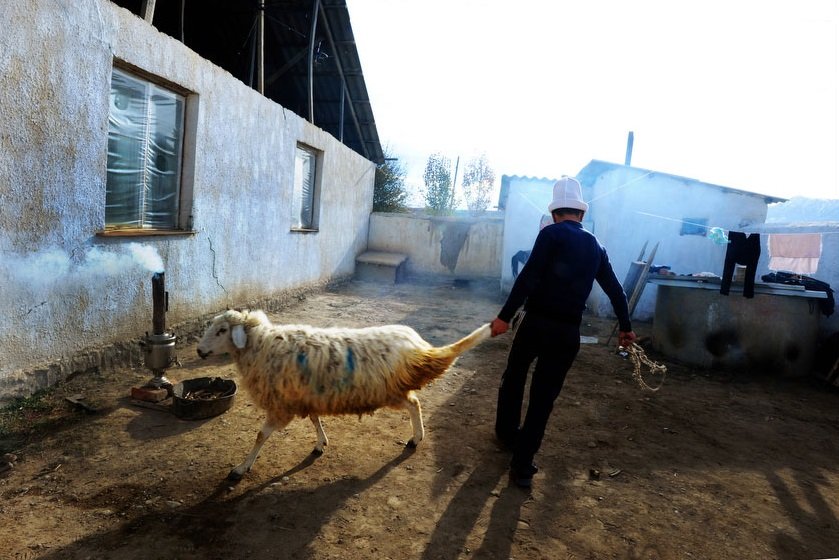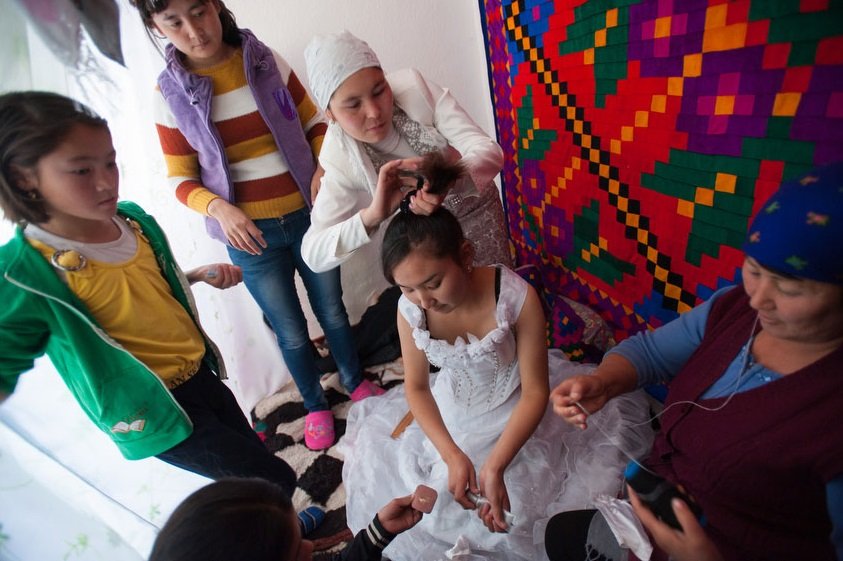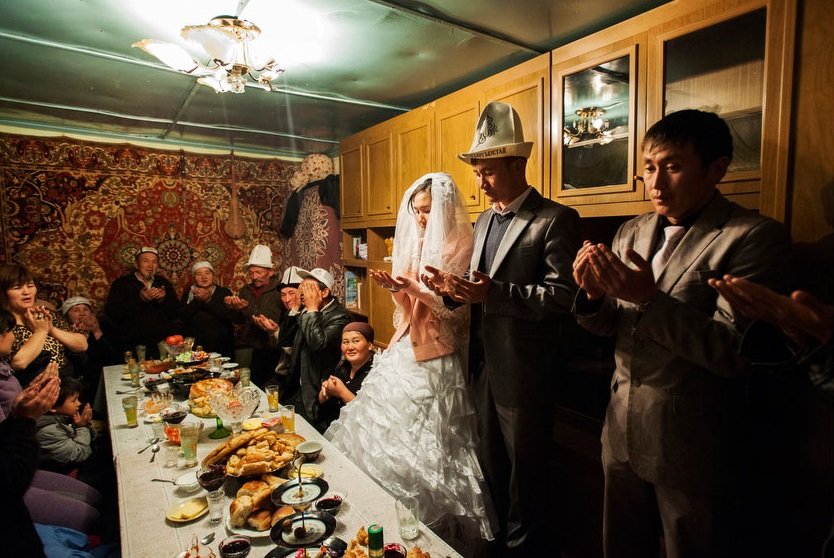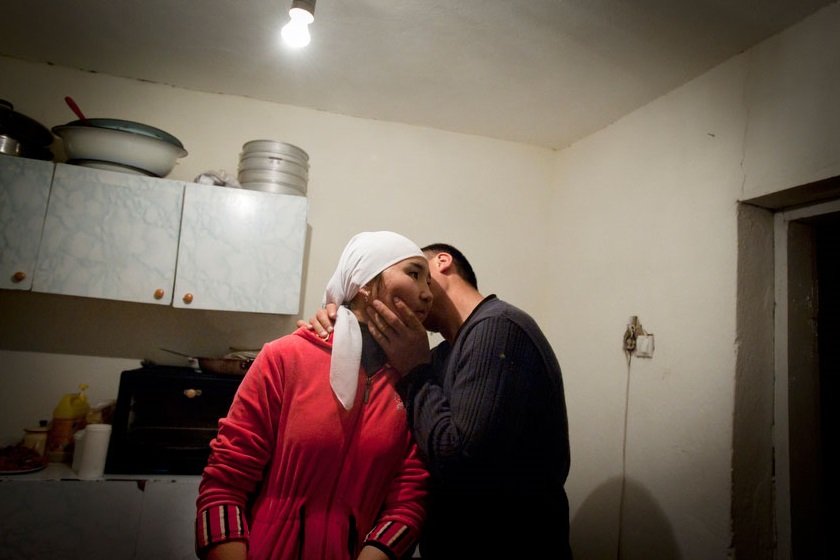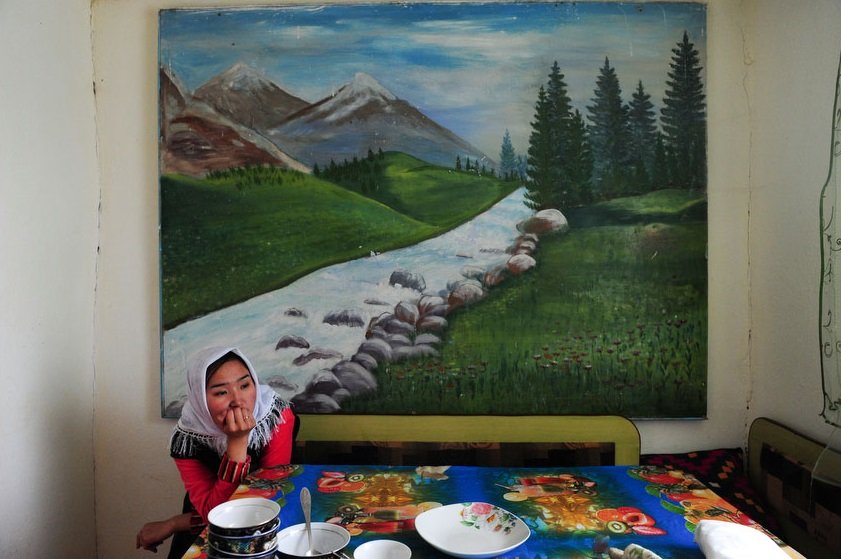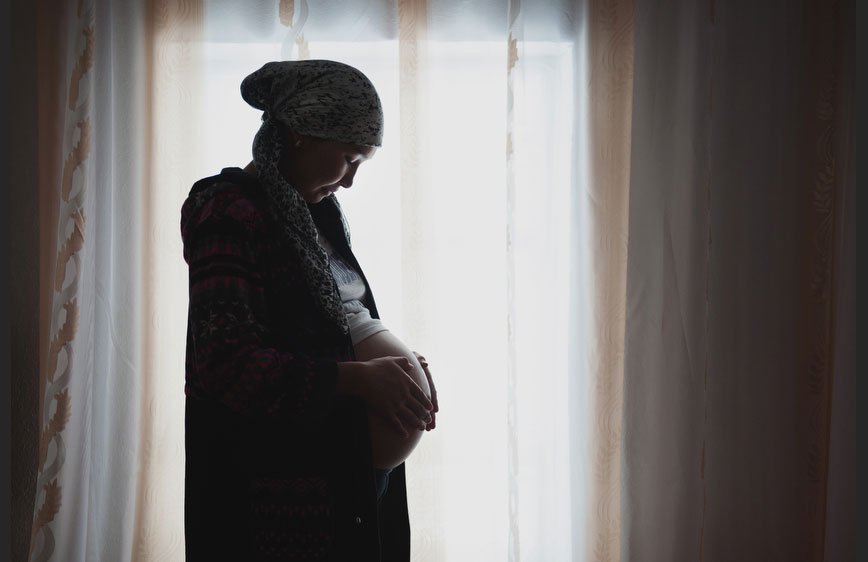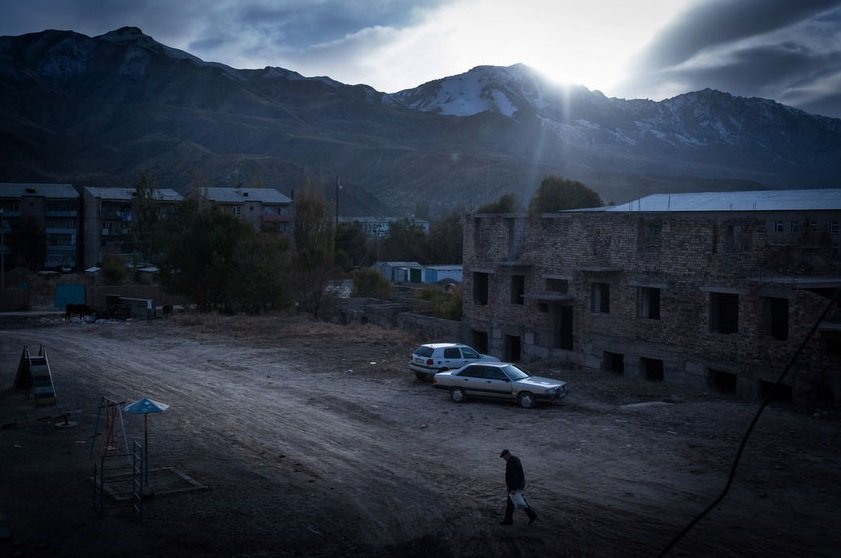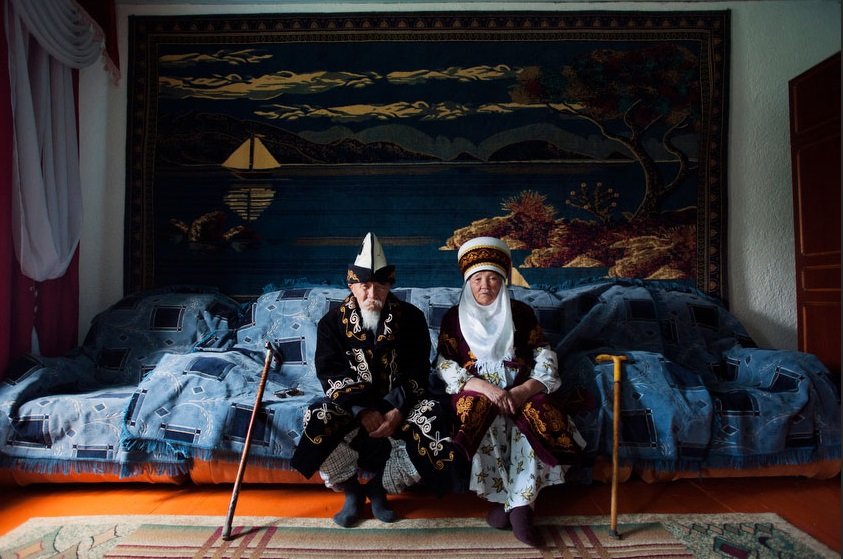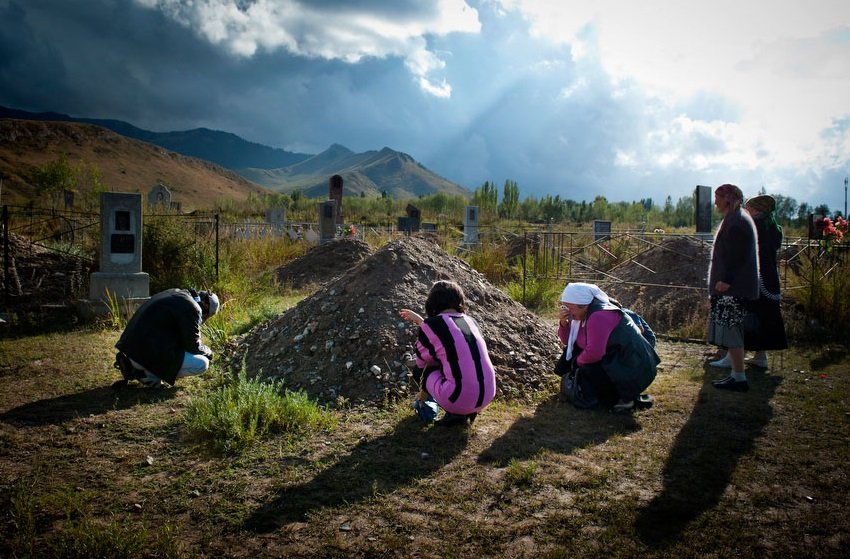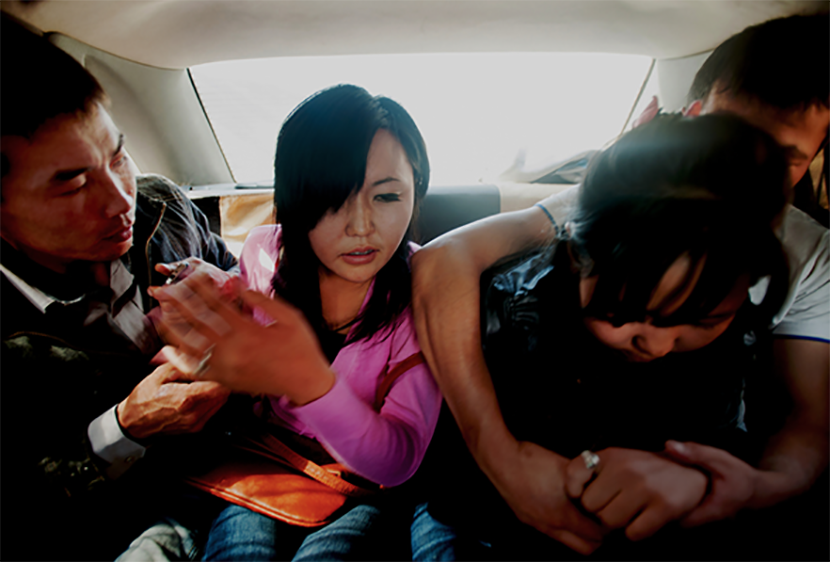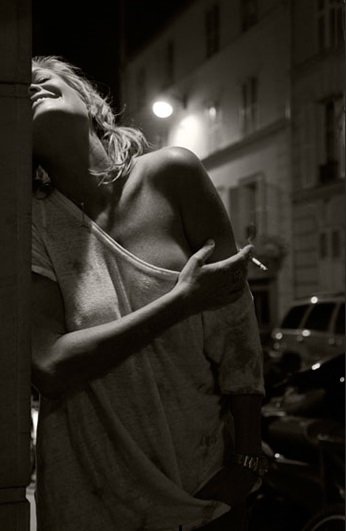Kyrgyzstan – Represented by Panos Pictures, Japanese photojournalist Noriko Hayashi has worked in diverse regions around the world, including Pakistan, Kyrgyzstan, Japan and Gambia. Her work, though journalistic in style, is more personal, going into the lives of her subjects in a very sensitive, poignant way. She has worked on issues ranging from the aftermath of the Fukushima nuclear disaster to the practice of bride kidnapping in Kyrgyzstan. Her work often deals with the human side of tragedy, and the resilience of people to live with hope.
Emaho: You stumbled upon photography almost by chance while you were still a university student working in Gambia. What inspired you to take up photography as a full time career?
NH: I was studying Peace & Conflict studies and International Politics at university. During my 3rd year in 2006, I had the opportunity to visit Gambia in West Africa with other students and my professor of African politics, as an induction course. Although the course was only for 3 weeks, I decided to stay in Gambia after other students left the country. At that time, I wanted to work for an NGO or humanitarian organization in the future. So in order to gain some practical experience, I started to work at a local elementary school as volunteer staff. But I also wanted to do other things in order to know more about the country (information I could get from TV, radio and newspaper was limited in Gambia). I thought it would be easier to just work at a local newspaper. Also I knew that there was tension between the government and media in Gambia, so I wanted to know how local journalists felt about working as a reporter in the country.
Even though I didn’t have any skills or experience working at media at that time, I just visited a Gambian independent newspaper called The Point, without making any appointment, and asked the editor in chief if I could work at the newspaper. Then he asked me, “So, what can you do for us”. Then I was thinking, ‘omg I can’t do anything…’ I didn’t have the confidence to write stories in English for the paper. So I just said, “Maybe I can take pictures for you”, although my level of photography was nothing—I didn’t even know how to use a single lens reflex camera. Then he said to me, “OK, you will be working with a reporter tomorrow as a photographer”.
This is how I started taking pictures. While I was working at The Point, some of my journalist friends shared their stories of how difficult it was for them to work in Gambia: some of them were receiving threatening e-mails; some journalists have been arrested without any formal charge; the government closed down some media houses; some media houses were attacked by arsonists; and also, the editor in chief of the The Point was shot dead in 2004. The experience of working with those inspiring journalists made me realize the value of detailing the realities of every stand of society.
Emaho: You work in regions all over the world, with diverse cultures and languages. How difficult is it for you to get access to your subjects and build relationships with them?
NH: It’s always challenging for me. I think I am very careful when I approach my subjects. When I do a long-term story, I try to focus on exploring intimate aspects of my subjects’ lives. I strive to understand the issues and the conditions my subjects are facing, and to understand them, I often spend time with my subjects, sharing their lives as much as possible, such as eating the same food and sleeping in the same place for several days and weeks sometimes. I believe that experiencing this on a personal level reveals the changes in mood and feeling of my subjects. I also enjoy building relationships through the process of portraying the story.
Emaho: How did you decide to work on the topic of bride kidnapping in Kyrgyzstan? What makes the practice of bride kidnapping so rampant (1 in 3 girls) in Kyrgyzstan?
NH: I began researching bride kidnapping years ago. The first time I heard about this was when I was still a student studying International Politics at university. I read about this in Human Rights Report. But I couldn’t really understand and imagine this as a realistic issue when I only read it. So in order to, I thought that it would be better to document this as a visual communication. How are these women kidnapped? Why do they have to stay with their abductors? What are their lives like afterwards? These are the questions I wanted to ask.
Why is the practice of bride kidnapping so rampant? Well, there are many reasons. For example, many Kyrgyz people believe that even non-consensual kidnapping is a tradition, even though it’s NOT tradition. Also, the girls’ parents often also pressure the girls, as once she has entered her kidnappers’ home she is considered to no longer be pure, making it “shameful” for her to return home. Therefore, in order to avoid scandal, a negative reputation among neighbours, cursing from the kidnapper’s family and disgrace, they tend to remain with their kidnappers. Also, since old Kyrgyz women are very respected, many young women can’t say no in the end and give up. About 84% of women who are kidnapped stay at their abductor’s home, according to Professor Russell Kleinback. But at the same time, it is also true that many young men think that kidnapping a woman to get married is a shameful thing. And also many Kyrgyz women believe that they don’t want that.
Emaho: As a country, Kyrgyzstan has gone through many upheavals. The practice of bride kidnapping is almost a thousand years old. How is Kyrgyzstan grappling with the advent of modernity while maintaining their cultural identity?
NH: First of all, I would like to make it clear that non-consensual bride kidnapping is NOT a Kyrgyz tradition and is not a thousand years old. Even Kyrgyz people tend to believe that this is their tradition. But it is not. Abduction for marriage only became popular during the last half century. Before the formation of the Soviet Union, marriages among Kyrgyzstan’s nomadic peoples were arranged by the parents.
Emaho: Kyrgyzstan being an outright patriarchal society, the issue of bride kidnapping is taken relatively lightly. How are women’s rights organizations there dealing with this issue? Do they have any real power to bring change?
NH: There are some women’s rights organizations in Kyrgyzstan that are dealing with the issue. They have been working on it.
Emaho: As a woman photographing such a practice, did it affect you on a deeper, more personal level?
NH: I felt so terrible when I witnessed. It is easy to imagine, like, “If I were her….” If I were her, I would do anything to get out of that situation. But for many Kyrgyz women, this is not that simple… It affected me on a personal level, especially when I was staying with a girl who was kidnapped before. 
Emaho: In your work in Kyrgyzstan, there were some moments of harrowing trauma, which you also photographed. In situations like this, how do you decide whether to photograph or to intervene in a different role?
NH: Well, some people may ask, “Why did you not intervene to try and stop this? Why did you not call the police to tell them that this was happening?” I asked the same question to myself many times. And I decided not to intervene as long as the girls have choice.
About Farida’s case, as a photojournalist, I thought I should witness this at first. I told myself as long as she is in a situation about which she has a right to decide what she wants to do, I won’t intervene. In Kyrgyzstan, there is an unspoken rule that if a woman keeps resisting, the family members of a kidnapper should respect her decision, in the end and she is allowed to leave. A young girls’ parents’ opinion and decision is also important in rural villages. So if I intervene without listening the woman’s parents’ view, it is considered very rude. So I thought I shouldn’t intervene and shouldn’t stop what was going on. While I was photographing, I decided if the wedding ceremony started while she was still struggling or she was about to be raped, then that would be the time I would intervene. Farida in the end made a phone call to her mother and let her know that she was kidnapped. And after 10 hours, her brother, her friends from college and her boyfriend came to rescue her. I didn’t intervene anything.
But there was another woman’s case… a woman who was kidnapped and was taken to a farm. But she got physically attacked by her husband and she was not able to meet her parents for almost 2 month after she got married. In her case, I reported this to the police through a local women’s rights organization. I personally think that there is no right answer whether a photographer should intervene or not. It really depends on the situation the subjects are facing, the social and cultural background, timing, etc…. Normally, I try to capture the events with my camera as they are happening before my eyes. But this is a very delicate issue, so I really had to think what stand point I should take.
Emaho: In Kyrgyzstan, although bride kidnapping is illegal, most authorities look the other way. Do you feel that this situation is changing in any way in recent times?
NH: Well, I would say it’s changing. In January 2013, the President of Kyrgyzstan signed an amendment in which jail time for abductors increased to 7-10 years, from 3 years.
Emaho: What has the international response been to your work on this subject, and how has it differed from the reactions in Kyrgyzstan? How do you plan to take this work further?
NH: Since the story was published from several international media outlets, I received many responses from readers, human rights organizations, and Kyrgyz media as well. For example, there is an NGO dealing with non-consensual bride kidnapping in Kyrgyzstan established by both Kyrgyz and non-Kyrgyz staff. I collaborated with the NGO and recently they are making posters using my photos for a campaign against non-consensual bride kidnapping. The posters are going to be put in schools and public places such as post offices in Kyrgzstan to educate Kyrgyz youth that non-consensual Ala Kachuu is not Kyrgyz tradition and it is a crime. There are several different reactions in Kyrgyztan and among Kyrgyz people.
I got the impression that many Kyrgyz young people, especially youth living in a city such as the capital, Bishkek, tend to believe that non-consensual kidnapping is shameful behavior. I met several young men who think that stealing a woman is uncool and stupid thing to do, as well many young women who told me that they would do anything to escape from abductors if they were kidnapped. There was a monthly magazine established by young Kyrgyzes in the early 2000s based in Bishkek. When I was covering the issue, they interviewed me about my views and how I, as a foreigner, see Ala Kachuu and my personal experience covering the issue. I was inspired that the local Kyrgyz young generation is now facing the issue seriously and tries to promote this through their publications to challenge public opinion. There are also other reactions. After I published a book on this issue, I had the opportunity to do some talk events in Japan. One day, there were Kyrgyz officials who attended the event, and one of them said, “Non-consensual kidnapping is not really happening. And I personally don’t know anyone who has experienced Ala Kachuu around me. I don’t want people to see Kyrgyz as a dangerous country”. I understand her point, and I also don’t want to people to think that Kyrgyzstan is not safe. It seemed that non-consensual kidnapping tend not to occur among educated and rich people, especially in cities. Therefore, there are different views about Ala Kachuu even among Kyrgyz people. However, I saw many cases of kidnapping while I was covering the story. Even though there are women who are happy now after several years since they got married through kidnapping, when I interviewed them, most of them said that they are against non-consensual kidnapping. I try to stay connected to the people and the women I photographed, so that I believe that I will be able to see the gradual change in their lives and the issue as well.
Photography Interview by Manik Katyal
Research by Adira Thekkuveettil




